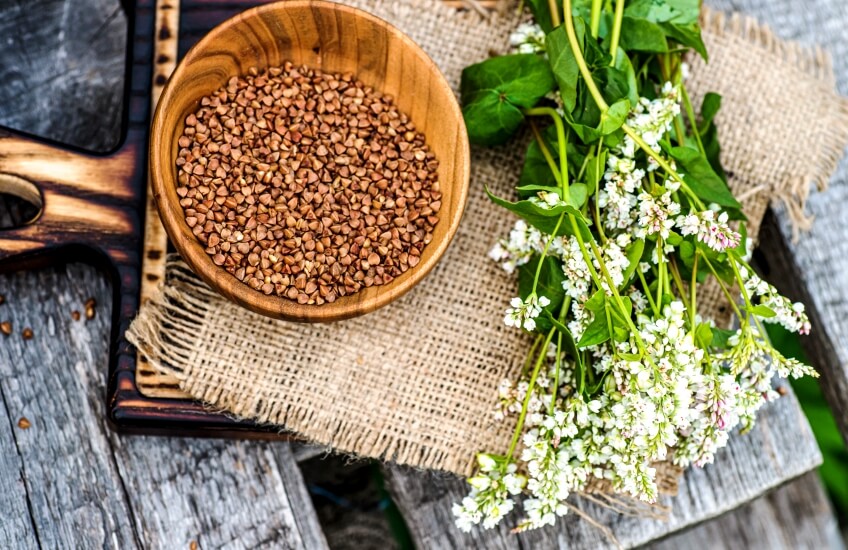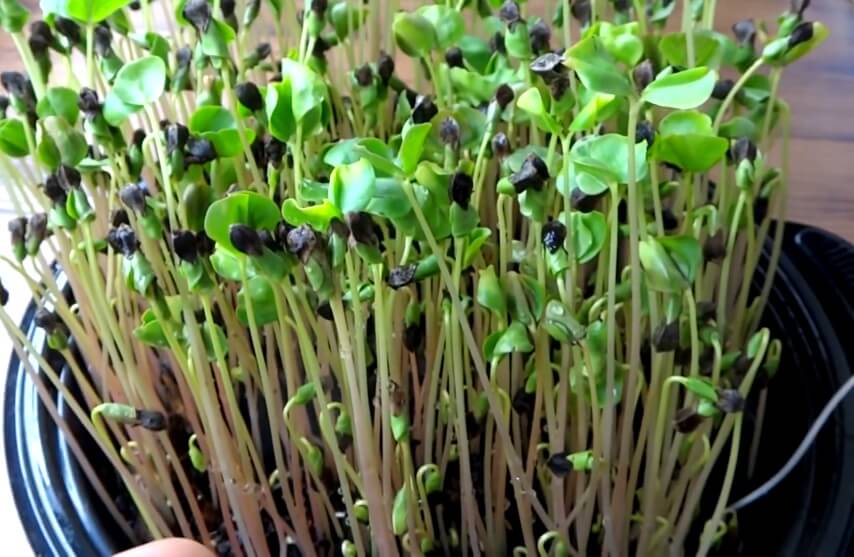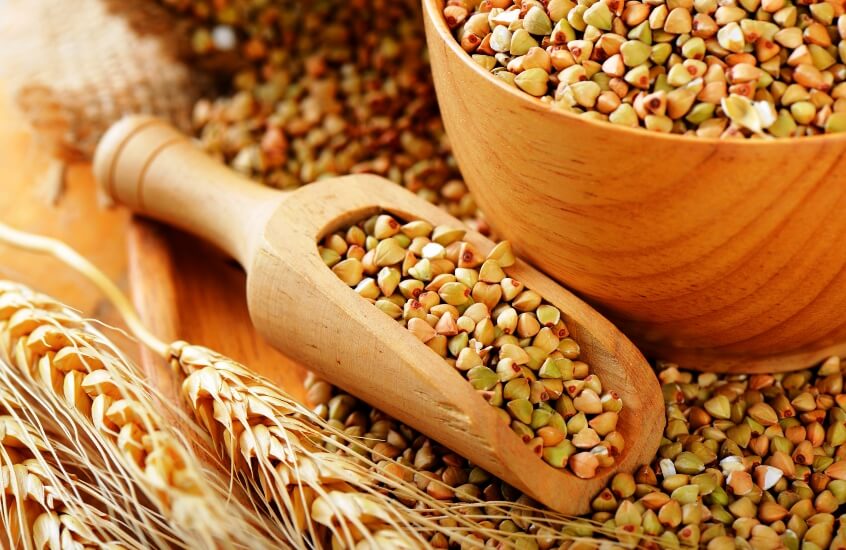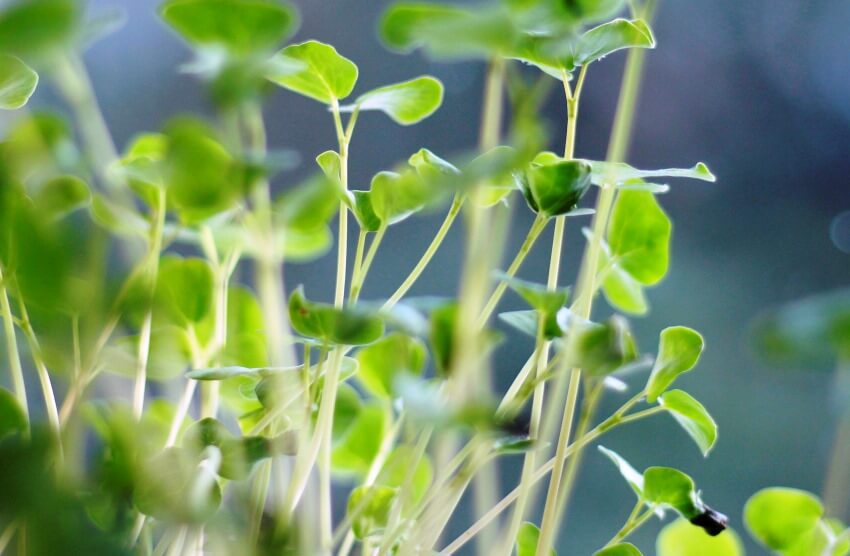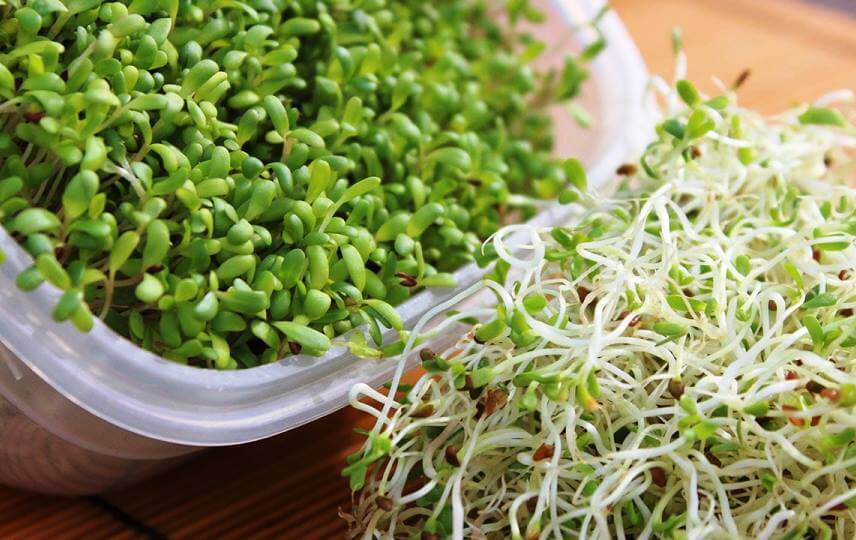Buckwheat has been grown for centuries in Asian countries and is currently growing in popularity. Despite its name, buckwheat is a fruit seed related to rhubarb and sorrel rather than wheat. Buckwheat microgreen is a vibrant, nutrient-rich, gluten-free microgreen with numerous health advantages.
Buckwheat microgreens are a fantastic alternative for enhancing any salad or serving as a dinner garnish. These delicious microgreens are an excellent choice for most allergy sufferers as they are gluten-free.
If Like to know more about microgreens, check these articles:
<<What Are Microgreens >> and <<How Much Microgreens To Eat Per Day>>
What is buckwheat?
Fagopyrum tataricum, also known as buckwheat, is a robust plant with seeds that resemble three-sided grains. It reaches a mature height of two to four feet. It produces a lot of flowers for two to three weeks. Then, hundreds of tiny, brown seeds with a high nutritional value are produced. Like sunflower seeds, each seed, or groat, is shielded by a tough outer shell or hull.
Buckwheat history
One of the first domesticated crops was buckwheat. Buckwheat use is believed to have started in Southeast Asia 5,000 and 6,000 years ago. From there, it spread through the Middle East, Central Asia, and, ultimately, Europe. Finland has records of buckwheat dating back to at least 5300 BCE. In the 1600s, it was ultimately imported to North America [1].
Buckwheat microgreens overview
| Family | Polygonaceae |
| Nutrition | Vitamins B, C, manganese, magnesium, copper, zinc, protein, and fiber |
| Average days to germinate | 2 to 4 days |
| Average days to harvest (after germination) | 7 to 11 days |
| Difficulty | Easy |
Nutritional value of buckwheat microgreen
Vitamin B, vitamin C, and other necessary micronutrients can be found in buckwheat microgreens. Buckwheat microgreens also contain manganese, magnesium, copper, zinc, protein, fiber and antioxidant [2].
Buckwheat microgreen health benefits
Due to buckwheat microgreens’ high antioxidant, protein, and fiber content, this food has several significant health benefits. Here is an overview of the top nutritional benefits of buckwheat microgreens and seeds [3]:
Healthy heart
Buckwheat microgreens have a high content of Rutin. Rutin is a bioflavonoid and potent antioxidant that aids in collagen synthesis and atherosclerosis prevention by maintaining the elasticity of the arteries.
Buckwheat microgreens also aid in reducing inflammation and lowering levels of LDL, or “bad cholesterol,” which is crucial for preserving cardiovascular health.
Controlling blood sugar
Buckwheat has a very low glycemic index rating compared to many whole grains; this indicates that carbohydrate available in buckwheat is absorbed gradually into the bloodstream, giving your body a consistent energy supply. Buckwheat microgreen aids in the control of diabetes and may lessen insulin resistance by reducing a sharp rise in blood sugar.
Gluten-free and non-allergenic
The fact that buckwheat microgreen is naturally gluten-free makes it a fantastic option for persons with celiac disease or grain sensitivity. For those who experience digestive issues, including leaky gut syndrome, substituting this microgreen for other grains or foods containing gluten may be beneficial.
Rich in fiber
Buckwheat microgreens are rich in dietary fiber. High fiber content can be beneficial since fibers keeps meals moving easily through the digestive system and may make you feel satisfied for extended periods of time.
Anti-cancer properties
Antioxidants and phenolic chemicals found in buckwheat microgreens may aid in the battle against some cancers. Flavonoids like oligomeric proanthocyanidins are some of the antioxidants included in this microgreen.
These antioxidants shield your cells from free radical oxidation and stop the harmful inflammation that can aid in cancer progression.
Rich in vegetarian protein
Buckwheat microgreen is not only high in vitamins and minerals, but it is also a fantastic source of plant protein that is easily absorbed.
How to grow buckwheat microgreens
It takes 2 to 4 days for the buckwheat to germinate. Allow it to reach 2 to 3 inches tall. You can harvest them almost ten days after planting them. The procedure of growing buckwheat microgreens is almost similar to other microgreens. Read the <<Growing Microgreens >> article to learn more about the general method for growing microgreens.
Growing Buckwheat Microgreens
Buckwheat microgreens will be grown up until the two green cotyledons. The plants are soft and straightforward to chew at this stage, making them ideal for salads and smoothies. You can grow buckwheat microgreens simply by following these steps [4]:
Soaking
Before planting, it is recommended to soak the buckwheat microgreen seeds in cold water for at least twenty-four hours. Make sure to give them a good rinse after soaking.
Planting
Most microgreens growers utilize 10′′x20′′ microgreen trays, which are also suggested for growing buckwheat microgreens. It is advised that you cultivate your microgreens in soil instead of hydroponics.
Pour a microgreen soil mix into the tray. Smooth and flatten the soil with a block or your hand without compacting it. Water the soil until the water runs out of the tray holes. Stop irrigating at this point and allow the excess water to drain from the tray.
Sprinkle the seed evenly over the soil in the tray. Mist your seeds using the spray bottle. Just keep in mind that the soil should be moist throughout but not soaking wet.
Lightening
Buckwheat microgreen prefers a grow light to the sun. The sunlight must be dispersed equally to let microgreens grow uniformly. The buckwheat microgreens might develop unevenly if placed on a sunny windowsill. As a result, it is better to use a grow lamp instead of direct sunlight to have uniform buckwheat microgreens.
Harvesting
It is more likely that the first leaves will be yellow, but do not worry; they will turn green rather rapidly. They will be ready for harvesting in six to twelve days. Cut them just above the stem as close as possible to the growth medium.
The plant should be harvested between the ages of 2 and 4 inches. When little leaves begin to emerge beneath the larger leaves, it is time to harvest them. Before eating or storing them, do not forget to rinse them and let them dry.
Storage
Like many microgreens, buckwheat microgreens have a short shelf life. It is recommended to consume them fresh. Simply dry your microgreens between two paper towels, put them in a jar, and keep them in the refrigerator for a few days.


